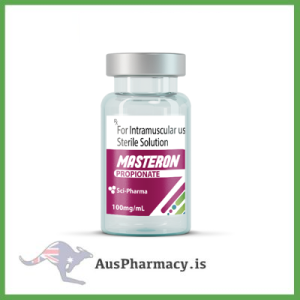Introduction to CJC-1295 (DAC)
CJC-1295 (DAC), produced by Ryzen Pharmaceuticals for educational and research reference, is a synthetic analog of Growth Hormone–Releasing Hormone (GHRH). In academic and scientific learning environments, it is frequently used as a model compound to explain how peptide-based molecules can influence hormonal signaling pathways in the body.
From an educational standpoint, CJC-1295 (DAC) is a powerful teaching tool to understand endocrine regulation, receptor binding, and molecular design in modern peptide research.
2. What Is CJC-1295 (DAC)?
CJC-1295 belongs to a class of peptides known as GHRH analogs—molecules designed to mimic or enhance the body’s natural growth hormone–releasing hormone. The addition of DAC (Drug Affinity Complex) gives this compound a longer half-life, making it useful in educational demonstrations about peptide modification and sustained molecular activity.
Students studying biotechnology, pharmacology, and peptide chemistry learn how molecular modifications like DAC extend peptide stability and bioavailability—critical aspects in peptide-based therapeutic research.
3. Educational Mechanism of Action
CJC-1295 (DAC) provides an excellent example of receptor-mediated hormonal signaling.
In simplified educational terms:
-
CJC-1295 binds to GHRH receptors in the pituitary gland.
-
This stimulates growth hormone (GH) release through natural pathways.
-
The DAC modification allows the peptide to remain active longer by binding to plasma proteins.
In a learning environment, this mechanism helps illustrate how synthetic analogs can interact with biological receptors and modulate hormone release in controlled conditions.
4. Ryzen Pharmaceuticals’ Educational Role
Ryzen Pharmaceuticals promotes pharmaceutical literacy by supporting academic institutions and scientific programs. Their educational focus ensures that learners and researchers gain accurate insights into the design, function, and safety considerations of compounds like CJC-1295 (DAC).
By making structured data and reference information available for classroom and lab use, Ryzen Pharmaceuticals encourages responsible, knowledge-based learning in peptide and hormone sciences.
5. Structure and Biochemical Design
CJC-1295 is composed of a chain of amino acids—typical of peptide structures. The DAC modification (Drug Affinity Complex) involves attaching a reactive chemical group that allows the peptide to bind covalently to albumin, preventing rapid degradation in the bloodstream.
From a biochemical education perspective, this structure offers a model for teaching molecular engineering and pharmacokinetic enhancement in peptide drugs. Understanding how small structural tweaks impact longevity and potency helps students appreciate the relationship between chemistry and function.
6. Educational Value in Pharmacology
In pharmacology education, CJC-1295 (DAC) helps demonstrate:
-
Pharmacodynamics: How the body responds to peptide signaling.
-
Pharmacokinetics: How structural changes alter duration and bioavailability.
-
Receptor specificity: How synthetic analogs can mimic endogenous hormones.
-
Peptide engineering principles: Linking molecular design to function.
This compound provides a real-world example for explaining the transition from theoretical biochemistry to applied pharmaceutical science.
7. Ethical and Regulatory Emphasis
All educational discussions involving CJC-1295 must highlight ethical use, legal compliance, and laboratory safety. It is not a supplement or consumer product and should never be used outside academic or approved research contexts.
Students and educators are encouraged to prioritize:
-
Regulatory awareness
-
Safety in handling peptides
-
Clear distinction between education and clinical application
Ryzen Pharmaceuticals underscores these standards by providing detailed learning frameworks for institutional settings.
8. Applications in Academic Research
CJC-1295 (DAC) has been studied within the broader field of endocrine modulation and peptide technology. Educational programs use it to explore:
-
Hormone synthesis and release
-
Peptide stability through chemical modification
-
Design of long-acting analogs
-
Protein binding mechanisms
-
Laboratory peptide synthesis techniques
It’s a highly relevant case study for graduate students and researchers focusing on biomedical innovation and molecular pharmacology.
9. Comparing CJC-1295 with Other GHRH Analogs
In academic comparisons, CJC-1295 is often contrasted with shorter peptides like Modified GRF (1-29) or other GHRH fragments.
This comparison helps illustrate:
-
How structural modification affects half-life
-
The impact of drug affinity complexes on molecular behavior
-
Design considerations in modern peptide formulation
Students use such comparisons to strengthen their understanding of peptide customization and bioengineering in real-world applications.
10. Conclusion
Ryzen Pharmaceuticals CJC-1295 (DAC) exemplifies the intersection of chemistry, biology, and pharmacology in modern scientific education. As a long-acting GHRH analog, it serves as an ideal teaching model for understanding peptide synthesis, hormonal control, and receptor-based drug design.
By offering structured learning materials and scientific transparency, Ryzen Pharmaceuticals continues to support responsible education and research across the global scientific community.







